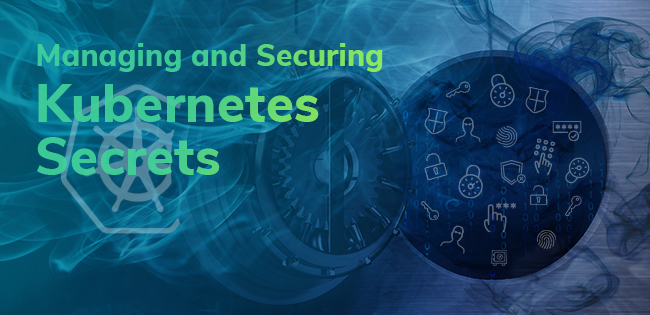Day 26 of my 90-Day Devops: Kubernetes Secrets and Access Control
 Abigeal Afolabi
Abigeal Afolabi
Hey DevOps Enthusiasts! Today's topic is all about Kubernetes Secrets and RBAC, a powerful duo for securing sensitive data in your deployments. I've been working with these concepts extensively in past projects, and I'm excited to share it with you but before we do the project, we need to first understand a little about these concepts.
Introduction
Managing Sensitive Data:
- In modern applications, sensitive data, such as passwords and API keys, needs to be stored securely. Hardcoding these values in code is risky, as it can lead to unintended exposure.
Kubernetes Secrets:
- Kubernetes provides a built-in mechanism called Secrets to help manage sensitive information securely. This allows developers to decouple sensitive data from application code.
Understanding Kubernetes Secrets
What are Kubernetes Secrets?
- Secrets are Kubernetes objects designed to hold small amounts of sensitive data. They are encoded and only accessible to authorized users and pods.
Use Cases:
API Keys: Essential for authenticating with external services.
Database Credentials: Securely store usernames and passwords for database access.
TLS Certificates: Use for secure communication between services.
Creating Kubernetes Secrets
Command-Line Creation:
- You can create a secret using the
kubectlcommand. For example:
- You can create a secret using the
kubectl create secret generic my-secret --from-literal=password=myPassword
- This command generates a secret named
my-secretcontaining a password.
YAML Manifest:
- Kubernetes Secrets can also be defined in a YAML file. Here’s how:
apiVersion: v1
kind: Secret
metadata:
name: my-secret
type: Opaque
data:
password: cGFzc3dvcmQ= # This is the Base64 encoded version of 'password'
- The
datafield requires Base64 encoding, which ensures the secret is not easily readable.
Access Control in Kubernetes
Role-Based Access Control (RBAC):
- RBAC is a method to manage who can access which resources in a Kubernetes cluster. It allows you to formulate fine-grained access policies.
Defining Roles:
- You can create a Role that grants specific permissions. Here’s an example:
apiVersion: rbac.authorization.k8s.io/v1
kind: Role
metadata:
namespace: default
name: secret-reader
rules:
- apiGroups: [""]
resources: ["secrets"]
verbs: ["get", "list"]
- This Role permits users to retrieve and list secrets within the
defaultnamespace.
Binding Roles:
- RoleBindings connect a Role with users or service accounts. For example:
apiVersion: rbac.authorization.k8s.io/v1
kind: RoleBinding
metadata:
name: secret-reader-binding
namespace: default
subjects:
- kind: User
name: my-user
apiGroup: rbac.authorization.k8s.io
roleRef:
kind: Role
name: secret-reader
apiGroup: rbac.authorization.k8s.io
- This binds the
secret-readerRole tomy-user, allowing them to access secrets.
Accessing Secrets in Applications
Mounting Secrets as Environment Variables:
- Secrets can be passed to applications as environment variables. Here’s how to define it in a pod:
apiVersion: v1
kind: Pod
metadata:
name: my-app
spec:
containers:
- name: my-container
image: my-image
env:
- name: MY_SECRET_PASSWORD
valueFrom:
secretKeyRef:
name: my-secret
key: password
- The application can access the secret using the environment variable
MY_SECRET_PASSWORD.
Using Secrets in ConfigMaps:
- You can reference secrets in ConfigMaps, allowing configuration values to be dynamic and secure.
Testing Access Control
Creating Test Users:
- Set up different users or service accounts to test permissions. For instance:
kubectl create serviceaccount test-user
Verifying Permissions:
- Use the command
kubectl auth can-ito check if a user has access:
- Use the command
kubectl auth can-i get secrets --as=test-user
- This command helps verify that permissions are correctly configured.
Best Practices for Managing Secrets
Regular Audits: Check permissions regularly to ensure only authorized users have access.
Least Privilege: Grant only the necessary permissions to users and services.
Namespace Isolation:
- Use Kubernetes namespaces to separate different environments (e.g., development, staging, production) to enhance security and organization.
Conclusion
Kubernetes Secrets and RBAC are essential tools for building secure and reliable applications. By storing sensitive data securely and controlling access through granular permissions, you create a robust foundation for your cloud-native deployments. Remember to regularly audit your configurations to maintain a secure environment.
Official Kubernetes Documentation:
Secrets: https://kubernetes.io/docs/concepts/configuration/secret/
RBAC: https://kubernetes.io/docs/reference/access-authn-authz/rbac/
Tutorials and Guides:
Kubernetes Secrets Tutorial (DigitalOcean): https://www.digitalocean.com/community/tutorials/how-to-use-kubernetes-secrets
Kubernetes RBAC Tutorial (Kubernetes.io): https://kubernetes.io/docs/tasks/configure-pod-container/configure-pod-permissions/
Kubernetes Secrets and RBAC (Red Hat): https://www.redhat.com/en/topics/containers/kubernetes-secrets-and-rbac
Blogs and Articles:
Kubernetes Secrets: A Comprehensive Guide (Cloud Native Foundation): https://www.cncf.io/blog/2021/01/14/kubernetes-secrets-a-comprehensive-guide/
Kubernetes RBAC: A Practical Guide (Medium): https://medium.com/swlh/kubernetes-rbac-a-practical-guide-37842978594a
Additional Resources:
Kubernetes Documentation (General): https://kubernetes.io/docs/
Kubernetes Community Forums: https://kubernetes.io/docs/tasks/community/community-resources/
Subscribe to my newsletter
Read articles from Abigeal Afolabi directly inside your inbox. Subscribe to the newsletter, and don't miss out.
Written by

Abigeal Afolabi
Abigeal Afolabi
🚀 Software Engineer by day, SRE magician by night! ✨ Tech enthusiast with an insatiable curiosity for data. 📝 Harvard CS50 Undergrad igniting my passion for code. Currently delving into the MERN stack – because who doesn't love crafting seamless experiences from front to back? Join me on this exhilarating journey of embracing technology, penning insightful tech chronicles, and unraveling the mysteries of data! 🔍🔧 Let's build, let's write, let's explore – all aboard the tech express! 🚂🌟 #CodeAndCuriosity